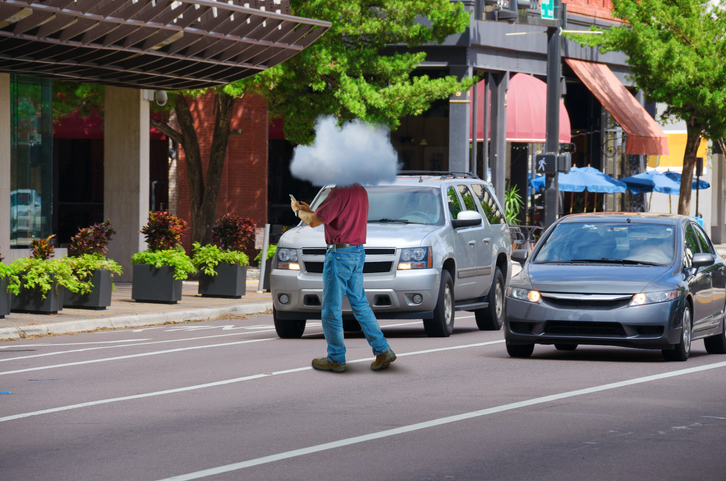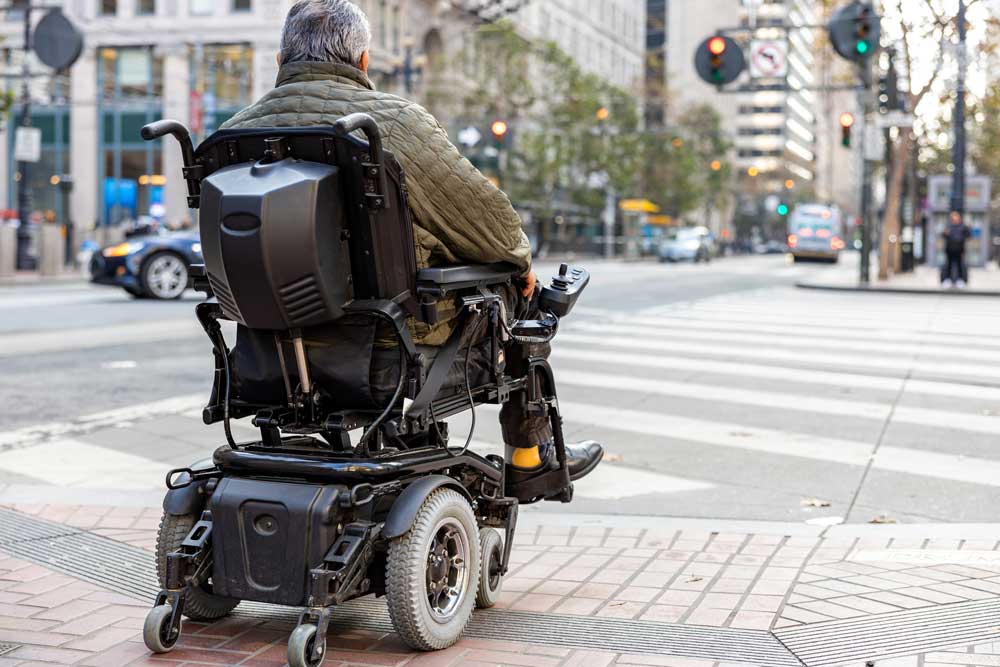Pedestrian Found 80% At Fault For Being Struck While Jaywalking
Reasons for judgement were published this week by the BC Court of Appeal upholding a trial judge’s assessment of fault for a pedestrian/vehicle collision.
In the recent case (Vandendorpel v. Evoy) the Plaintiff was struck while crossing a street. He was at a light controlled intersection. He pressed the button to activate the pedestrian walk signal but did not wait for the signal to come on. Instead, he proceeded to cross the street while the signal for traffic in his direction was still red. The Defendant was driving marginally over the speed limit and entered the intersection on a fresh yellow light striking the jaywalking pedestrian. At trial the plaintiff was found 80% at fault for the crash. In upholding this result the BC Court of Appeal agreed with the following reasonsing of the trial judge:
[53] While both parties failed in their respective duties of care, I find Mr. Evoy’s failure was much less significant than Mr. Vandendorpel’s. His negligence consisted of driving at a speed that was over the posted limit, even if it was only minimally above that limit (i.e., approximately 55 km/hr in a 50 km/hr zone) and doing so when the lighting and road conditions were less than optimal. Compared to this conduct, Mr. Vandendorpel’s failures were more serious. He was dressed in dark clothing, including a dark hooded pullover that was zipped up to the top. None of his clothing had any light reflective qualities. Counsel for Mr. Vandendorpel submits that wearing dark clothing is not in and of itself contributory negligence. That submission is correct, but Mr. Vandendorpel’s failures are greater than simply the clothing he was wearing. He was also wearing headphones and listening to music and that reduced his ability to hear any on-coming traffic. He also had to cross a five-lane roadway that spanned approximately 18 metres. Although he depressed the pedestrian control device, he only waited a second or so before he attempted to cross the roadway. He carelessly did so even though the pedestrian control signal was still red and the traffic control signals were still green. Mr. Evoy’s vehicle approached the Intersection from the north. That is the direction Mr. Vandendorpel was initially walking. The headlights of Mr. Evoy’s vehicle would have been visible from at least 100 metres away. Mr. Vandendorpel must not have looked north on Sooke Road as he began to cross the roadway because he did not see the headlights of Mr. Evoy’s vehicle until it was approximately 30 metres away from him. That is, until the vehicle was just about to enter the Intersection. At that point, the pedestrian control signal was still red and the traffic control signal was yellow. Notwithstanding all of this, Mr. Vandendorpel chose to run across the path of the on-coming car instead of standing fast or retreating.
[54] I remain of the firm opinion that Mr. Vandendorpel showed a reckless disregard for his duties as a pedestrian on the roadway and conclude that his degree of fault for the accident is greater than that of Mr. Evoy.
[55] The case authorities counsel provided me with respect to apportionment have been helpful. Each party’s degree of responsibility is to be decided by assessing the risk their respective conduct created, the effect of that risk, and the extent to which each party departed from the standard of reasonable care (see: MacDonald (Litigation guardian of) v. Goertz, 2008 BCSC 394, aff’d 2009 BCCA 358).
[56] In my view, the risk Mr. Vandendorpel created when he chose to walk and then run across Sooke Road, into the path of Mr. Evoy’s on-coming vehicle created a much more significant risk than Mr. Evoy driving at a speed marginally above the speed limit on a dark morning with a wet roadway. Moreover, I find the departure from the standard of care expected of Mr. Vandendorpel as a pedestrian was much more pronounced than the departure of Mr. Evoy from his duty of care as a driver of a motor vehicle.
Looking for high risk auto insurance? Contact the high risk auto pros for an instant car insurance quote. Auto Insurance at your finger tips.





